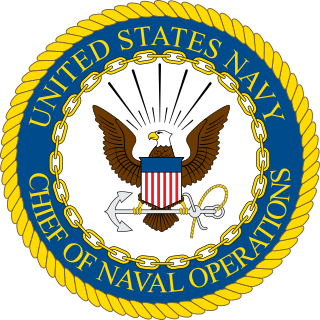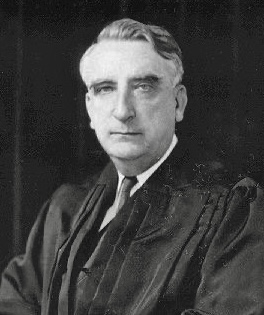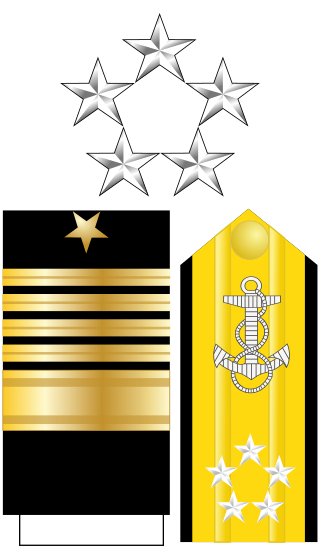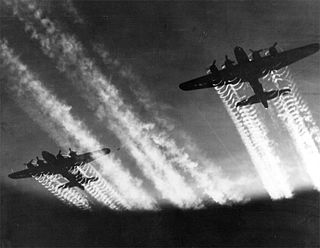
The chief of naval operations (CNO) is the highest-ranking officer of the United States Navy. The position is a statutory office held by an admiral who is a military adviser and deputy to the secretary of the Navy. The CNO is also a member of the Joint Chiefs of Staff and in this capacity, a military adviser to the National Security Council, the Homeland Security Council, the secretary of defense, and the president.

The National Security Act of 1947 was a law enacting major restructuring of the United States government's military and intelligence agencies following World War II. The majority of the provisions of the act took effect on September 18, 1947, the day after the Senate confirmed James Forrestal as the first secretary of defense.

The Joint Chiefs of Staff (JCS) is the body of the most senior uniformed leaders within the United States Department of Defense, which advises the president of the United States, the secretary of defense, the Homeland Security Council and the National Security Council on military matters. The composition of the Joint Chiefs of Staff is defined by statute and consists of a chairman (CJCS), a vice chairman (VJCS), the chiefs of the Army, Marine Corps, Navy, Air Force, Space Force, and the chief of the National Guard Bureau. Each of the individual service chiefs, outside their JCS obligations, works directly under the secretaries of their respective military departments, e.g. the secretary of the Army, the secretary of the Navy, and the secretary of the Air Force.

Ernest Joseph King was a fleet admiral in the United States Navy who served as Commander in Chief, United States Fleet (COMINCH) and Chief of Naval Operations (CNO) during World War II. He was the U.S. Navy's second-most senior officer in World War II after Fleet Admiral William D. Leahy, who served as Chief of Staff to the Commander in Chief. He directed the United States Navy's operations, planning, and administration and was a member of the Joint Chiefs of Staff and Combined Chiefs of Staff.

Frederick Moore Vinson was an American attorney and politician who served as the 13th chief justice of the United States from 1946 until his death in 1953. Vinson was one of the few Americans to have served in all three branches of the U.S. government. Before becoming chief justice, Vinson served as a U.S. Representative from Kentucky from 1924 to 1928 and 1930 to 1938, as a federal appellate judge on the U.S. Court of Appeals for the District of Columbia Circuit from 1938 to 1943, and as the U.S. Secretary of the Treasury from 1945 to 1946.

The Combined Chiefs of Staff (CCS) was the supreme military staff for the United States and Britain during World War II. It set all the major policy decisions for the two nations, subject to the approvals of British Prime Minister Winston Churchill and U.S. President Franklin D. Roosevelt.

Harold LeClair Ickes was an American administrator, politician and lawyer. He served as United States Secretary of the Interior for nearly 13 years from 1933 to 1946, the longest tenure of anyone to hold the office, and the second longest-serving Cabinet member in U.S. history after James Wilson. Ickes and Labor Secretary Frances Perkins were the only original members of the Roosevelt cabinet who remained in office for his entire presidency.

William Harrison Standley was an admiral in the United States Navy, who served as Chief of Naval Operations from 1933 to 1937. He also served as the U.S. ambassador to the Soviet Union from 1941 until 1943.

Fleet admiral is a five-star flag officer rank in the United States Navy whose rewards uniquely include active duty pay for life. Fleet admiral ranks immediately above admiral and is equivalent to General of the Army and General of the Air Force.
The United States Fleet was an organization in the United States Navy from 1922 until after World War II. The acronym CINCUS, pronounced "sink us", was used for the Commander in Chief, United States Fleet. This was replaced by COMINCH in December, 1941, under the Executive Order 8984, when it was redefined and given operational command over the Atlantic, Pacific, and Asiatic Fleets, as well as all naval coastal forces. The Executive Order 9096 authorized the offices of the CNO and COMINCH to be held by a single officer; Admiral Ernest J. King was first to do so, and in 1944 was promoted to the five-star rank of fleet admiral.

The National Defense Research Committee (NDRC) was an organization created "to coordinate, supervise, and conduct scientific research on the problems underlying the development, production, and use of mechanisms and devices of warfare" in the United States from June 27, 1940, until June 28, 1941. Most of its work was done with the strictest secrecy, and it began research of what would become some of the most important technology during World War II, including radar and the atomic bomb. It was superseded by the Office of Scientific Research and Development in 1941, and reduced to merely an advisory organization until it was eventually terminated during 1947.

The War Shipping Administration (WSA) was a World War II emergency war agency of the US government, tasked to purchase and operate the civilian shipping tonnage the United States needed for fighting the war. Both shipbuilding under the Maritime Commission and ship allocation under the WSA to Army, Navy or civilian needs were closely coordinated though Vice Admiral Emory S. Land who continued as head of the Maritime Commission while also heading the WSA.

The military history of the United States during World War II covers the nation's role as one of the major Allies in their victory over the Axis Powers. The United States is generally considered to have entered the conflict with the 7 December 1941 surprise attack on Pearl Harbor by the Empire of Japan and exited it with the 2 September 1945 surrender of Japan. During the first two years of World War II, the US maintained formal neutrality, which was officially announced in the Quarantine Speech delivered by US President Franklin D. Roosevelt in 1937. While officially neutral, the US supplied Britain, the Soviet Union, and China with war materiel through the Lend-Lease Act signed into law on 11 March 1941, and deployed the US military to replace the British forces stationed in Iceland. Following the 4 September 1941 Greer incident involving a German submarine, Roosevelt publicly confirmed a "shoot on sight" order on 11 September, effectively declaring naval war on Germany and Italy in the Battle of the Atlantic. In the Pacific Theater, there was unofficial early US combat activity such as the Flying Tigers.

The Allied leaders of World War II listed below comprise the important political and military figures who fought for or supported the Allies during World War II. Engaged in total war, they had to adapt to new types of modern warfare, on the military, psychological and economic fronts.

General Wade Hampton Haislip was a senior United States Army officer who served in both World War I and World War II, where he led XV Corps on the Western Front from 1944 to 1945. He later became a four-star general, serving as Vice Chief of Staff of the United States Army (VCSA) from 1949 to 1951.
During his two terms in office, President Harry S. Truman appointed four members of the Supreme Court of the United States: Chief Justice Fred M. Vinson, Associate Justice Harold Burton, Associate Justice Tom C. Clark, and Associate Justice Sherman Minton.

The United States Army Air Forces was the major land-based aerial warfare service component of the United States Army and de facto aerial warfare service branch of the United States during and immediately after World War II (1941–1947). It was created on 20 June 1941 as successor to the previous United States Army Air Corps and is the direct predecessor of the United States Air Force, today one of the six armed forces of the United States. The AAF was a component of the United States Army, which on 2 March 1942 was divided functionally by executive order into three autonomous forces: the Army Ground Forces, the United States Army Services of Supply, and the Army Air Forces. Each of these forces had a commanding general who reported directly to the Army Chief of Staff.
The presidency of Franklin D. Roosevelt began on March 4, 1933.

The third presidential term of Franklin D. Roosevelt began on January 20, 1941, when he was once again inaugurated as the 32nd president of the United States, and the fourth term of his presidency ended with his death on April 12, 1945. Roosevelt won a third term by defeating Republican nominee Wendell Willkie in the 1940 United States presidential election. He remains the only president to serve for more than two terms. Unlike his first two terms, Roosevelt's third and fourth terms were dominated by foreign policy concerns, as the United States became involved in World War II in December 1941.















